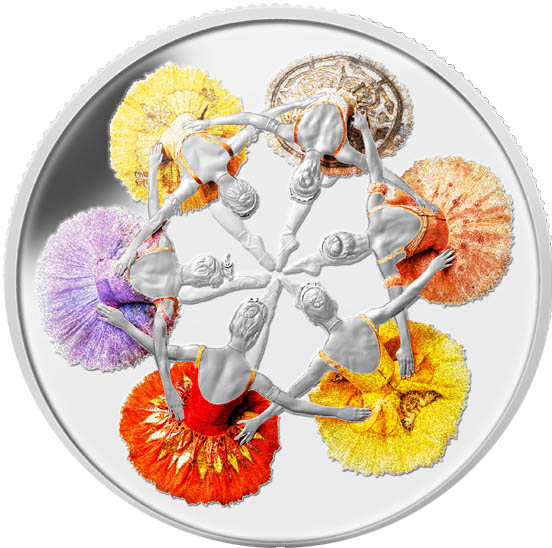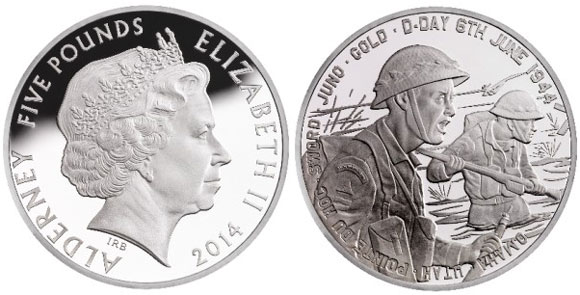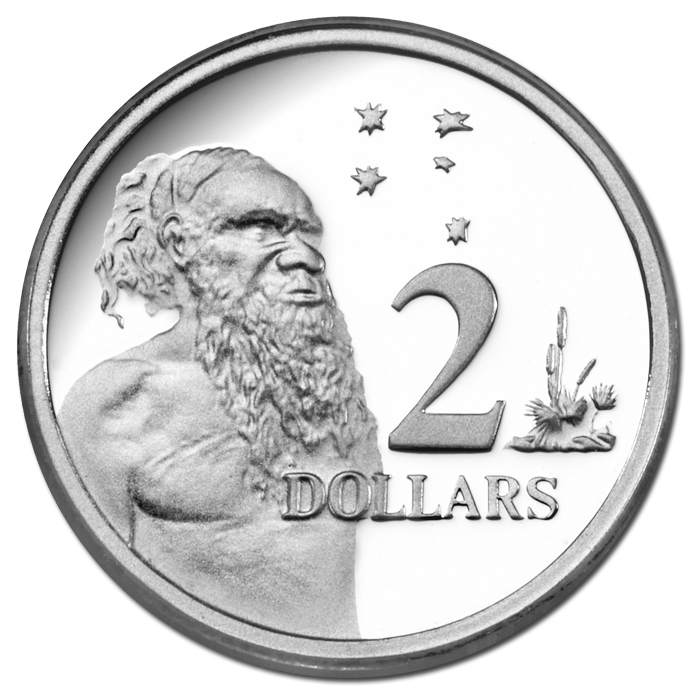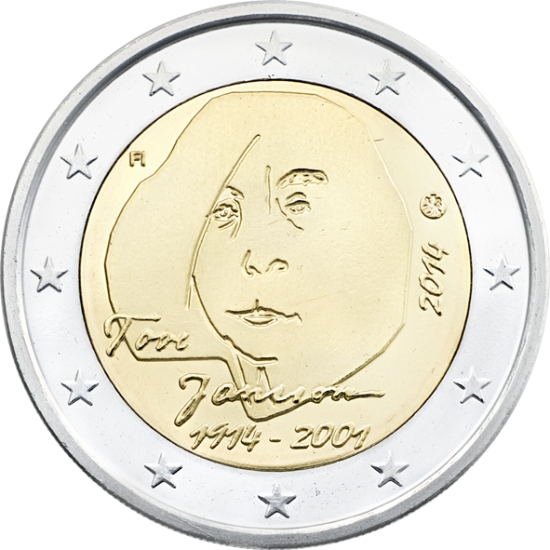
It was the greatest maritime disaster in Canadian history—a tragedy unparalleled by the loss of life and the speed at which the events unfolded. The sinking of RMSEmpress of Ireland made headlines around the world in 1914; sadly, the onset of the First World War would quickly overshadow the events that transpired in the waters near Rimouski, Que.
Built in Scotland by the Fairfield Shipbuilding and Engineering Company, Empress of Ireland was launched on January 27, 1906. Measuring 172 metres long and 20 metres wide, the Canadian Pacific Railway steamship was widely regarded at the time as one of the fastest and most comfortable passenger ships for the transatlantic journey between England and Canada.
On the afternoon of May 28, 1914, the Empress left its berth in Quebec's harbour for its first summer voyage to Liverpool. In the early morning hours of May 29, the liner was steaming down the St. Lawrence River near Pointe-au-Père when at 1:40 a.m., the Norwegian collier Storstad was sighted at about eight miles to starboard. Both crews attempted to anticipate one another's course as a thick fog engulfed both ships, forcing Captain Henry George Kendall to bring the Empress to a stop. But minutes later, the Storstad emerged from the fog at a mere 30 metres from theEmpress – it was too late for either ship to alter its course and at 1:55 a.m., theStorstad's reinforced hull ploughed into the centre of the Empress.
The Empress could not withstand such damage to its compartments. Water rushed into the Empress, trapping many passengers inside their cabins. The ship listed sharply on its starboard side, allowing water to pour in through the portholes and rendering it impossible to close most of the watertight doors. The tragedy was further compounded when only a few of the lifeboats were able to be launched before the ship turned over completely on its side. In the span of a mere 14 minutes after the collision, RMS Empress of Ireland had sunk to its final resting place.
Of the 1,477 passengers onboard RMS Empress of Ireland, 1,012 perished including 134 children. For most, the Empress will be forever linked with its tragic end, but it is also remembered for the thousands of immigrants who boarded this great liner to make their journey to a new life in Canada. In 1999, the wreck site was classified as a historical and archaeological property, and it has since earned a protected status as a National Historic Site.

Designed by Canadian artist John Horton, your coin uses selective paint to recreate the imminent collision of RMS Empress of Ireland and the Norwegian collierStorstad during the early morning hours of May 29, 1914. Rolling in from the coast (engraved in the background), the thick fog comes between the two ships in the coloured centre portion of the image field. The shadowy image of the Storstademerges from the right side of the image, its sharp bow in line to make contact with the Empress's starboard side. The passenger ship's stern and funnels are partially unobstructed by the fog in this image to provide a glimpse of the liner before tragedy would send it to its final resting place on the bottom of the St. Lawrence River.
| Сountry: | Canada |
| Data of issue: | 2014 |
| Face value: | 20 Dollars |
| Metal: | Silver .999 |
| Weight: | 31,39 g |
| Diameter: | 38 mm |
| Quality: | Proof |
| Mintage: | 7,000 pcs |
 Запись еще никто не прокомментировал. Возможно вы хотите высказаться?
Запись еще никто не прокомментировал. Возможно вы хотите высказаться?

On 25 March 2014 the Central Bank of Malta will issue a gold coin depicting the zecchino. The coin has a face value of €5.
The zecchino was a gold coin first minted in Venice in 1284 and derived its name from the Venetian mint which was known as the ‘zecca’. The coin, which weighed 3.5 grams, was of almost pure gold content. For more than 500 years the design of the coin remained unchanged. It was therefore considered a stable currency and was widely accepted as a means of payment. Consequently, many countries, especially those in the Mediterranean, adopted and issued gold coins similar to the Venetian zecchino.
The Bank’s gold numismatic coin was designed and engraved by Noel Galea Bason.
The obverse of the coin shows the emblem of Malta with the year of issue 2014.
The reverse depicts a zecchino issued by Phillippe Villiers de l’Isle Adam, the first Grand Master to rule over Malta. The zecchino was a gold coin first minted in Venice in 1284 and derived its name from the Venetian mint which was known as the ‘zecca’. The coin, which weighed 3.5 grams, was of almost pure gold content. For more than 500 years the design of the coin remained unchanged. It was therefore considered a stable currency and was widely accepted as a means of payment. Consequently, many countries, especially those in the Mediterranean, adopted and issued gold coins similar to the Venetian zecchino.

This numismatic coin was minted at the Royal Dutch Mint with the following specifications:
| Сountry: | Malta |
| Data of issue: | 2014 |
| Face value: | 5 Euro |
| Metal: | Gold .999 |
| Weight: | 0,5 g |
| Diameter: | 11 mm |
| Quality: | Proof |
| Mintage: | 10,000 pcs |
The coin was introduced and minted in Malta by the Order of St John. It normally depicted, on one side an image of St John, the patron saint of the Order, handing a banner to the kneeling Grand Master; on the other side it depicted the figure of Christ holding the Gospel.
 Запись еще никто не прокомментировал. Возможно вы хотите высказаться?
Запись еще никто не прокомментировал. Возможно вы хотите высказаться?
The Carnation Revolution, also referred to as the 25 April (25 de Abril), was a military coup in Lisbon, Portugal on 25 April 1974 which overthrew the regime of the Estado Novo. The revolution started as a military coup organized by the Movimento das Forças Armadas (Armed Forces Movement, MFA), composed of military officers who opposed the regime, but the movement was soon coupled with an unanticipated and popular campaign of civil resistance. This movement would lead to the fall of the Estado Novo and the withdrawal of Portugal from its African colonies.

The name "Carnation Revolution" comes from the fact no shots were fired and when the population took to the streets to celebrate the end of the dictatorship and war in the colonies, carnation flowers were put into the muzzles of rifles and on the uniforms of the army.
The two curves on the coin represent the generic form of a carnation flower symbolizing the movement. The name of the issuing country 'PORTUGAL' and the national shield are inscribed above the flower. The center image shows the date of the event, "APRIL 25" and at the bottom the number of years since the revolution indicates, "40 YEARS" and the year of issue "2014". The format of letters and numbers is inspired by those used on posters and other media 40 years ago.
| Сountry: | Australia |
| Data of issue: | 2014 |
| Face value: | 1 Dollar |
| Metal: | Silver .999 |
| Weight: | 31,135 g |
| Diameter: | 40,60 mm |
| Quality: | Proof |
| Mintage: | 5,000 pcs |
 Запись еще никто не прокомментировал. Возможно вы хотите высказаться?
Запись еще никто не прокомментировал. Возможно вы хотите высказаться?
World of Wonders IX is a new edition of the coin series with a historical and an emotional background.

Candi Prambanan was built around 850 AD and counts as one of the largest temple complexes in Indonesia.
Mahabodhi Temple, UNESCO Worldheritage since 2002, is allegedly the place where historic Buddha woke up.
Sao Miguel das Missoes is one of seven Jesuit Missions which was built at the beginning of the 17th until the middle of the 18th century.
Volubilis was an important ancient roman city. The well preserved excavations are situated in North Africa and are part of the UNESCO Worldheritage since 1997.
| Сountry: | Palau |
| Data of issue: | 2014 |
| Face value: | 5 Dollars |
| Metal: | Silver .925 |
| Weight: | 20 g |
| Diameter: | 38,61 mm |
| Quality: | Proof |
| Mintage: | 2,500 pcs |
 Запись еще никто не прокомментировал. Возможно вы хотите высказаться?
Запись еще никто не прокомментировал. Возможно вы хотите высказаться?

To commemorate the 75th anniversary of the Royal Winnipeg Ballet, the Royal Canadian Mint is paying colourful tribute to the organization's rich artistic legacy within Canada and abroad with a unique silver collector coin, which was unveiled by Her Royal Highness The Duchess of Cornwall.
A Royal Canadian Mint exclusive, this coin features the use of an advanced "Sheer Effect" colourization technique used for the first time! This shimmery colour innovation faithfully recreates the intricate, soft-coloured costumes worn by the Royal Winnipeg Ballet dancers in the lavish production of The Sleeping Beauty.
The reverse image is an engraved rendition of a photograph by one of Canada's foremost dance photographers, David Cooper. This overhead view features six dancers from the Royal Winnipeg Ballet's lavish production of The Sleeping Beauty – a ballet classic that brings together timeless choreography from Marius Petipa and the spellbinding music of Tchaikovsky. With their arms outstretched and intertwined, the dancers form a snowflake-like pattern as they lean forward, their right legs outstretched in front of them so that their point shoes meet at the centre. Advanced "Sheer Effect" colour faithfully recreates the stunning costumes worn by the Royal Winnipeg Ballet's dancers and further showcases the beautiful embellishments that adorn their traditional platter tutus.

| Сountry: | Australia |
| Data of issue: | 2014 |
| Face value: | 20 Dollars |
| Metal: | Silver .999 |
| Weight: | 31,60 g |
| Diameter: | 40 mm |
| Quality: | Proof |
| Mintage: | 7,500 pcs |
The coin comes in its very own music box! The fairytale-like image is protected by a customized case that plays Sleeping Beauty (Valse) melody by Tchaikovsky when opened.
 Запись еще никто не прокомментировал. Возможно вы хотите высказаться?
Запись еще никто не прокомментировал. Возможно вы хотите высказаться?

One of the most eagerly anticipated dates on the collector calendar has arrived! The new Australian Deadly & Dangerous Silver Proof has been unveiled! A sensational addition to one of the hottest programs in global numismatics, the latest issue honours the fearsome Spider-Hunting Scorpion.
Evolving over 430 million years, and distinguished by large pincers and twisting tail topped with a stinger, the instantly recognisable physique of the scorpion inevitably evokes fear in the observer.
The stuff of nightmares, the fact that the Spider-Hunting Scorpion viciously pursues another of humankind's most dreaded creatures only intensifies that fear! A typically vivid illustration of the Perth Mint's fullcolour minting techniques, the unnerving appearance of the Spider-Hunting Scorpion has been captured perfectly upon the crown-sized 40,60 mm fl an of this dramatic legal tender release.

The reverse of the coin features a coloured Australian Spider-Hunting Scorpion resting on grass and gravel, preying on a struck spider. The inscription AUSTRALIA’S SPIDER-HUNTING SCORPION also appears in the design.
Issued as legal tender under the authority of the Government of Tuvalu, the obverse of the coin depicts the Ian Rank-Broadley effigy of Her Majesty Queen Elizabeth II, the monetary denomination, and the 2014 year-date.
| Сountry: | Australia |
| Data of issue: | 2014 |
| Face value: | 1 Dollar |
| Metal: | Silver .999 |
| Weight: | 31,135 g |
| Diameter: | 40,60 mm |
| Quality: | Proof |
| Mintage: | 5,000 pcs |
This coin is a must-have for those who own any of its predecessors in the Deadly & Dangerous Series – each of which has sold out and soared in value. The 2006 Redback Spider $1 regularly sells at around A$1,200, the 2010 Blue-Ringed Octopus $1 can fetch over A$400, and even a very recent issue such as the 2012 Funnel-Web Spider $1 has already been seen on the open market at A$200.
 Запись еще никто не прокомментировал. Возможно вы хотите высказаться?
Запись еще никто не прокомментировал. Возможно вы хотите высказаться?
The Treasury of the Government of Alderney have issued three new coins which pay homage to the D-Day landings which occurred 70 years ago next month. The D-Day landings are especially important to the Channel Islands since they were the only territory of the British Isles to come under Nazi control. The Channel Islands were occupied by Nazi forces for much of World War II, from the 30th June 1940 until the liberation on the 9th May 1945. The Bailiwick of Jersey and Bailiwick of Guernsey including Alderney – the two British Crown dependencies in the English Channel lie just 10 miles off the coast of Normandy. During their occupation, the policy of the island governments, acting under instructions communicated by the British Government before the occupation, was that of passive co-operation.
The Nazis swiftly organized their administrations of the islands as part of separate military government sectors. The Kommandant issued an order in Guernsey on the 2nd July 1940 and in Jersey on the 8thJuly 1940 instructing that laws passed by the legislatures would have to be given assent by the Kommandant and that mainland German orders were to be registered as legislation. The civil courts would continue in operation, but German military courts would try breaches of German law. Although plans had been drawn up and proposed as early as 1943 by Vice Admiral Lord Louis Mountbatten for a military reconquest of the islands, these plans were never carried out. Finally, on 6 June 1944 thousands of Allied troops advanced on the beaches of Normandy to begin the operation to liberate France. Many of them would be lost, their bravery remembered for years to come by their comrades and families. The Channel Islands were liberated only after the German surrender. On the 8th May 1945 at 10 am, the islanders were informed by the German authorities that the war was over. Prime Minister Winston Churchill broadcast on the radio at 3 pm during which he announced that hostilities had ended officially at one minute after midnight.

All three coins share the same design and are the work of Royal Mint engraver Lee R. Jones. He portrays two British soldiers wading through the shallows from their landing craft, heading for the fortified beaches ahead, artillery fire creating splashes in the water around them. The scene is depicted as though from a fellow soldier’s viewpoint, giving the coin a sense of the personal story that stands behind one of the most important moments of the Second World War. The coin bears the codenames of the D-Day landing beaches.
The obverse of the coin features the classic portrait of Her Majesty The Queen by Ian Rank-Broadley FRBS and in use on British & commonwealth coinage since 1998.
| Сountry: | UK | ||
| Data of issue: | June, 2014 | ||
| Face value: | £5 | £5 | £5 |
| Metal: | Gold .917 | Silver .925 | Cupro-nickel |
| Weight: | 39,9 g | 28,2 g | 28,2 g |
| Diameter: | 38,6 mm | 38,6 mm | 38,6 mm |
| Quality: | Proof | Proof | BU |
| Mintage: | 70 pcs | 1,944 pcs | unlimited |
 Запись еще никто не прокомментировал. Возможно вы хотите высказаться?
Запись еще никто не прокомментировал. Возможно вы хотите высказаться?
Australia’s unique fauna first graced our coins when Stuart Devlin’s wildlife designs were chosen for the introduction of decimal currency in 1963. Devlin’s composition of kangaroos later adorned the $1 coin in 1984, and Horst Hahne’s indigenous elder became the reverse of the $2 coin introduced in 1988. Most Australians hold these coins without considering that they are works of art and pieces of history.

Each coin is housed in a navy presentation case with clear lid, perfect for display. Further to this the coin is packaged into a navy gift box featuring the Royal Australian Mint crest logo, and with accompanying Certificate of Authenticity.
First issued exactly 25 years ago, during Australia's bicentennial year, the Indigenous Elder $2 is, of course, traditionally struck from aluminium-bronze. An irresistible opportunity to own this superbly designed Australian legal tender coin, the Royal Australian Mint has issued the 2014 $2 Silver Proof individually!
| Сountry: | Australia |
| Data of issue: | 2014 |
| Face value: | 2 Dollars |
| Metal: | Silver .999 |
| Weight: | 8,55 g |
| Diameter: | 20,50 mm |
| Quality: | Proof |
| Mintage: | 500 pcs |
 Запись еще никто не прокомментировал. Возможно вы хотите высказаться?
Запись еще никто не прокомментировал. Возможно вы хотите высказаться?
The Finnish Mint has created a special two-euro coin commemorating the internationally-known artist and writer Tove Jansson. Collectors will be able to get their hands on the special coin when it goes into circulation in mid-June.

The two-euro special coin struck in honour of Tove Jansson (9 August 1914 – 27 June 2001) is designed after the artist's self portrait. Jansson is one of the internationally best known Finnish authors. She is best remembered for her independent and stubborn Moomin characters with their complex and quite inimitable world view.
| Сountry: | Finland |
| Data of issue: | June 16, 2014 |
| Face value: | 2 Euro |
| Metal: | CuNi25, CuZn20Ni5/Ni/CuZn20Ni5 |
| Weight: | 8,5 g |
| Diameter: | 25,75 mm |
| Quality: | Proof / UNC |
| Mintage: | 11 000 pcs / 1 489 000 pcs |
The observations coincide with the centennial of Tove Jansson’s birth. Apart from Finland, she is being commemorated with events around Europe and in Japan, Kenya and Australia.
 Запись еще никто не прокомментировал. Возможно вы хотите высказаться?
Запись еще никто не прокомментировал. Возможно вы хотите высказаться?
Pursuant to the provisions of Law 312/2004 on the Statute of the National Bank of Romania, the National Bank of Romania issued for collectors, on 19 May 2014, a silver coin dedicated to the anniversary of 125 years since the establishment of the Superior War School.
Obverse: a graphic composition depicting the building of the Military Academy, the current headquarters of the Carol I National Defence University, its foundation year “1889”, the face value “10 LEI”, the coat of arms of Romania and the year of issue “2014”; “ROMANIA” and “125 DE ANI DE LA INFIINTAREA SCOLII SUPERIOARE DE RAZBOI” inscribed on the outer ring.

Reverse: the portraits of King Carol I and General Ștefan Fălcoianu, the founding father of the Superior War School, the inscriptions “Carol I” and “St.Falcoianu” in an arc and the institution’s logo; “UNIVERSITATEA NATIONALA DE APARARE CAROL I” and its motto “LABOR IMPROBUS OMNIA VINCIT” inscribed on the outer ring.
| Сountry: | Romania |
| Data of issue: | May 19, 2014 |
| Face value: | 10 lei |
| Metal: | Silver .999 |
| Weight: | 31,103 g |
| Diameter: | 37 mm |
| Quality: | Proof |
| Mintage: | 250 pcs |
 Запись еще никто не прокомментировал. Возможно вы хотите высказаться?
Запись еще никто не прокомментировал. Возможно вы хотите высказаться?